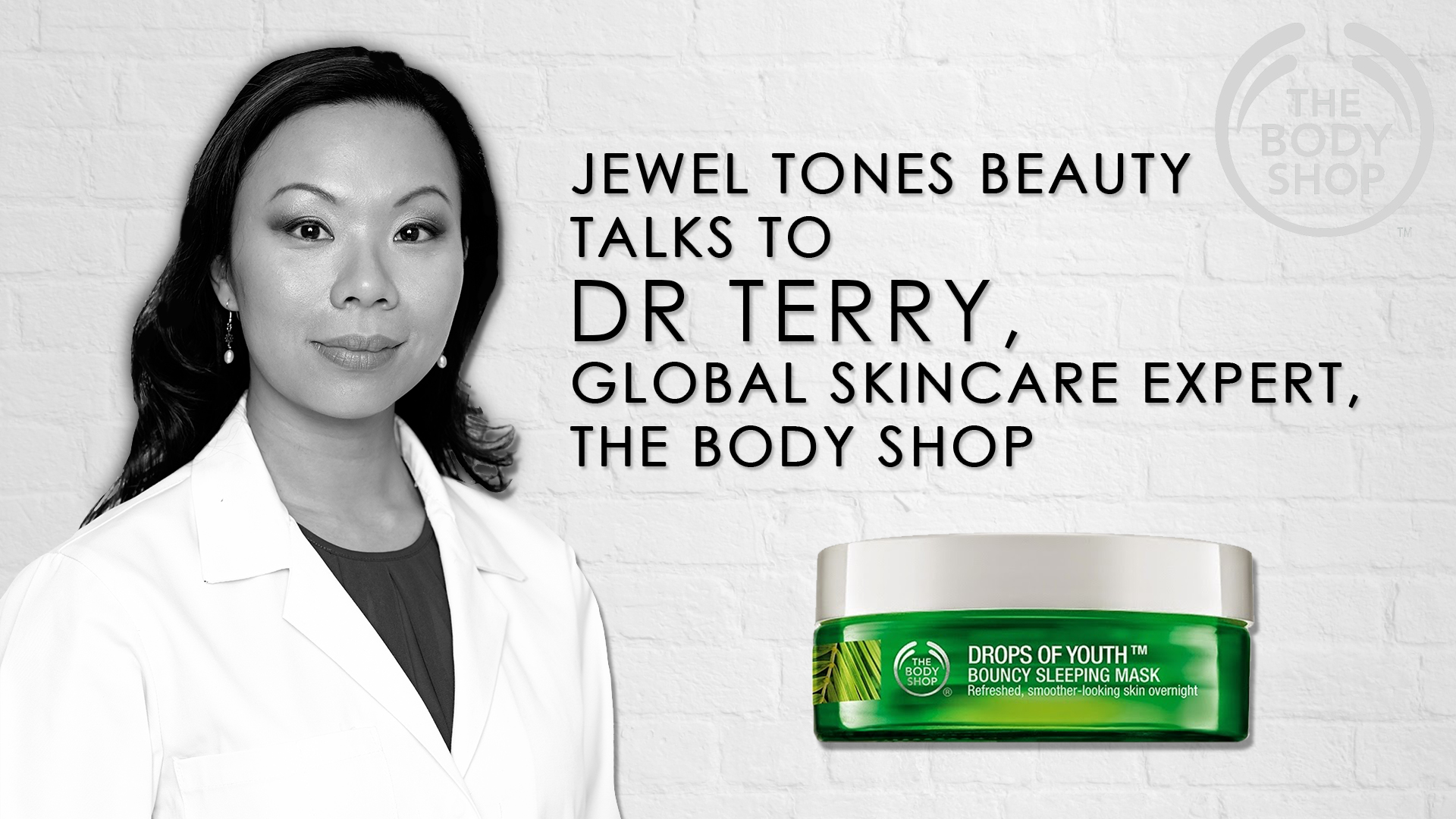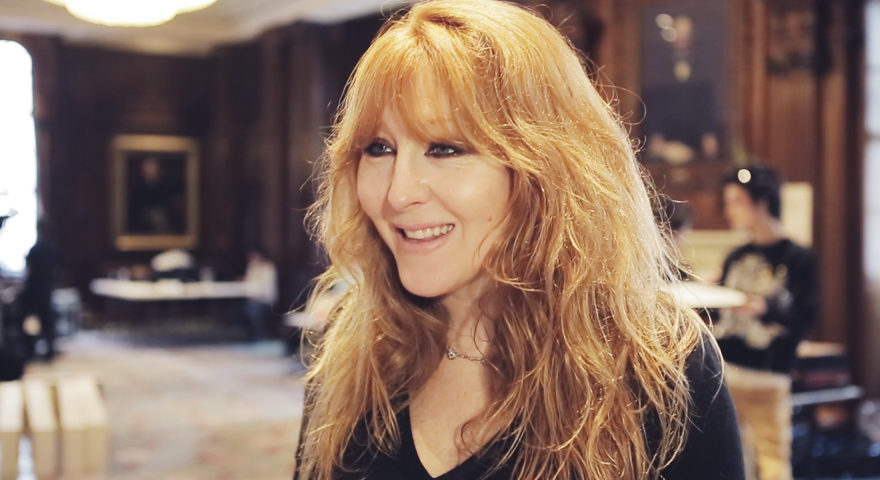
Jewel Tones Beauty talks all things acne, hydration and a holistic skincare regime according to your menstrual cycle with The Body Shop’s Dr Terry, who wanted to become a doctor to help with her mother’s acne, eczema and psoriasis, which deeply affected her confidence.
What can women with darker skin tones do to help with acne?
Women with darker skin tones have a high risk of post-inflammatory pigmentation i.e. pigmentation or scarring from acne. It is very important to protect the skin from UV damage during active flare ups to avoid worsening the trauma to the skin. Exfoliation is vitally important for women with darker skin tones as it prevents clogging of the pores, sluggish circulation and scar formation. It encourages healthy skin renewal and improves pigmentation and skin texture. Avoid cleansing too much, as this can dry the skin out. Hydrating the skin is also important to prevent over-drying and the skin producing extra oil to compensate.
What’s the difference between hydration and moisturisation?
Hydration is like the skin cells drinking water, feeling full and it’s thirst quenched. Moisturisation is like the skin cells drinking oil, they may look and feel full and shiny but will still feel dry and thirsty.
Why and how often should people use face masks?
Depending on what the skin needs. Skin can be oily, dry or tired/dull looking. This can be affected by one’s lifestyle, their genetics, their menstrual cycle, stress levels, amount of sleep and rest, how much water they drink, their diet, the environment they live in and the products they use. There are different sleeping masks with different ingredients for different purposes. E.g. clay mask, brightening mask and anti-ageing mask, you can use once or twice a week depending on your skin type. A sleeping mask e.g. The Drops of Youth Bouncy Sleeping Mask, £22, www.thebodyshop.co.uk, has been created to be used every night to hydrate the skin (which is much needed in extreme weather conditions, central heating or air conditioned rooms) and help repair the skin from the day’s aggressors.
Why do people get enlarged pores and what can you do to help reduce the appearance and help skin texture?
Enlarged pores are believed to be caused by 2 reasons:-
a) Build of oil and dirt in these pores, causing the pores to stretch and enlarge.
b) Loss of elasticity around the pore, causing the pore to be “lax” and look enlarged. This can be caused by the ageing process or collection of oil, causing the pore to “rupture”.
What you can do to help reduce the appearance and help skin texture:-
a) Using a cleansing brush to clean your skin – this will help remove more dirt and oil better than hands can.
b) Avoid using too many products which can dry, irritate or over-activate your skin. The skin will produce extra oil to compensate and this may cause a build up in the pore.
c) Reduce the amount of sugar in the diet. Sugar converts testosterone (the male hormone which is responsible for oil production in the skin) into a more potent version – DHT, which causes the pore to pump out more oil.
d) Exfoliate the skin at least once a week to gently resurface and soften the skin.
e) Boost skin’s elasticity by using ingredients e.g. Vitamin C and the Drops of Youth Bouncy Sleeping Mask (which uses stem cell technology harnessing the regenerative properties of Edelweiss flowers) to prevent breakdown of collagen/ elastin and promote repair during sleeping time.
What can you recommend to help prevent dull skin?
a) Hydration! Hydration! Hydration!
b) Exfoliation
c) Brightening using ingredients e.g. Licorice and Vitamin C
d) Having a good night sleep and applying the Drops of Youth Bouncy Sleeping Mask every night to repair the skin overnight.
Skincare according to your menstrual cycle. How and what are the benefits?
The way your skin looks, feel and behaves is governed largely by your hormones. Hormones fluctuate through your menstrual cycle. This is normal. However, depending on your diet, lifestyle, environment and stress levels, fluctuations can occur wildly causing bad PMS, bloating and mood swings, or minimally where you don’t experience these symptoms. By being in tune with your skin during your cycle, you are able to fine tune your skin care routine to meet it’s needs.
Here’s a simplified overview of the skin cycle (based on an average 4 week menstrual cycle):-
Week 1 – Dry phase
From the first day of your period to just after, your skin is dry and sensitive due to the drop of the female hormone, oestrogen. In this phase, you should focus on hydrating and calming products and treatments.
Week 2 – Skin Improving phase
Your oestrogen is rising in preparation of releasing the egg and your skin starts to show more colour. In this phase, you should focus on exfoliation and assisting the shedding of old skin and encouraging skin renewal.
Week 3/ Ovulation – Glowing phase
Your hormones are at the peak where you are at your most fertile. In this phase, you look, smell and sound your best in order to attract a mate as nature intended. In this phase, your collagen production is also at its best so you can benefit from anti-ageing (e.g. lifting or tightening facial treatments) to maximise the benefits. However, melanin activity is also high so make sure you use plenty of sun protection and avoid skin treatments e.g. peels or lasers that may potentially cause post-inflammatory pigmentation. But otherwise, enjoy the compliments and book this time to have your headshots taken, go for an interview, have an important meeting or go on a hot date. You are looking HOT!
Week 4 – Oily phase
Many women suffer from this phase as the hormones starts to fall if fertilisation of the egg did not occur. During this phase, focus on reducing the oil, hydrating and calming the skin. You can also focus on reducing sugar in your diet to reduce the oil in your skin.




